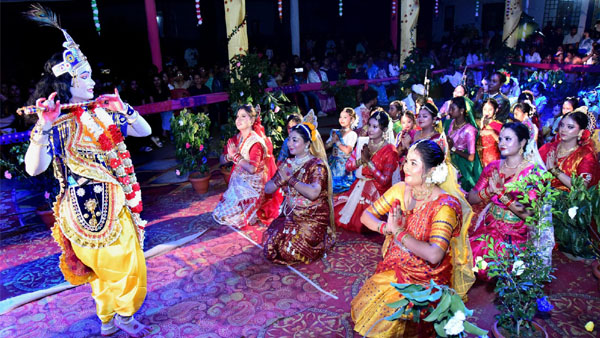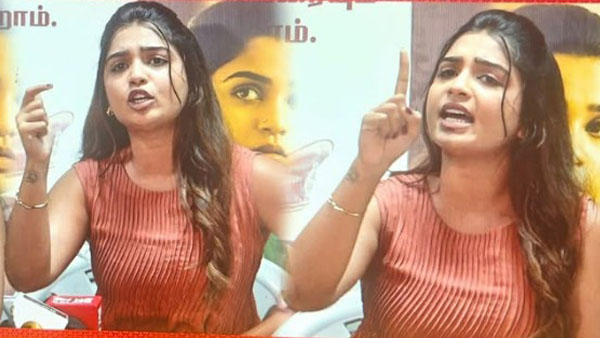By Dipak Kurmi
The Ras-Krira, or The Divine Display of Love, carries a profound spiritual significance. From a historical standpoint, it is presumed that Lord Krishna’s birth occurred in the first decade of the sixteenth century B.C. or the last decade of the fifteenth century B.C. (approximately 1510 B.C.- 1490 B.C.). According to Indian astronomy, Lord Krishna manifested during the Dwapar Yuga, the third of the four yugas or ages. The Ras-Krira or Ras-Leela, intertwined with Lord Krishna, is considered a creation of the Dwapar Yuga. In revered scriptures such as the Harivansha, Srimadbhagavata, Kirttana-Ghosa, Bishnupurana, Brahmavoivarta Purana, Geeta Govinda, Keli Gopal Nat, Lord Krishna is hailed as the “Purnabrahma” (complete incarnation of God) of the Dwapar Yuga. Consequently, people worship Lord Krishna as omnipotent, acknowledging him as “Krishna Eka Deva Dukhahari,” signifying Krishna as the sole alleviator of troubles in the Kali Yuga, the Fourth Age. Throughout the cyclical divisions of the yuga or era, the Ras-Krira or Ras-Leela takes diverse forms, shaped by the unique characteristics of different regions, atmospheres, and the varied nature of mankind.
The Ras-Leela or Ras-Yatra, which blossomed during the Dwapar Yuga in the sacred land of Vrindavana, where Krishna joyously engaged with the “Gopys” (female milkmaids) during the autumnal season, is eloquently portrayed by Mahapurusha Srimanta Sankaradeva as “Ras-Krira.” The term Ras-Krira signifies the circular dance of Lord Krishna with the cowherdesses of Vraja on the banks of the river Yamuna during the clear autumnal nights. Despite its apparent erotic aesthetics, the Ras-Krira is profoundly spiritual, illustrating the connection between the individual and the Soul Supreme. The depiction of Ras-Leela in Srimadbhagavata can be found in Adi Dasama, Kirttana-Ghosa, and the Keli Gopal Nat, compositions by Srimanta Sankaradeva. In the Ras-Leela section of Dasama, he captivatingly describes—
puspara surabhi gandhe amoda manata /
gunjare bhramare madhupane huya matta //
hena bitopana bane bhrami bhagavanta /
gopisava same kririlanta aparjanta //
Inhaling the fragrance of flowers, his mind fills with profound joy. Enchanted by the sweet nectar, black bees hum in delight. The divine presence gracefully moves through this beautiful jungle, engaging in the exquisite play of love with abundant “Gopy’s.”
The Ras-Krira, originating from almost 177 slokas (verses) in the Bhagavata, receives a detailed exploration in the works of Sankaradeva, particularly in the Kirttana-Ghosa and Adi Dasama. Within the Ras-Krira section of Kirttana-Ghosa, there exist 18 Ghosas and 218 padas (verses). Similarly, in the Ras-Krira of Adi Dasama, one encounters 23 chapters and 421 padas (verses).
The Brajavali language’s Keli GopalNat serves as a concise rendition of Ras-Krira found in Kirttana and Dasama. The depiction of Ras-Krira in Kirttana-Ghosa unfolds in the following manner—
ito ras-krira katha krishnara/
ekanta cite sune jito nara //
krishnata bhakati barhibe tara /
sukhe hoibe kama-sagara para //
Refrain:
The tale of Rasa-Krira belongs to Krishna. For the one who listens with a purposeful soul, their devotion to Krishna shall intensify, leading them to joyfully conquer the sea of lust.
Again…
ito ras-krira keli name kama-jaya /
karila bhrittara pade Krishna kripamaya //
aka sune bhane jitojane abishrama /
barhibe bhakati ati jinibeka kama //
Refrain:
Rasa-Krira, this divine play, serves as the conquest of lust, a gracious act performed by Lord Krishna to deepen the trust of devotees. Whether one sings or listens without interruption, the journey of devotion shall progress further, marked by the triumphant overcoming of lust.
The Ras-Yatra’s observance in the Pre-Sankararite Era in Assam remains uncertain. However, it can be asserted that the first occurrence of Ras-Yatra in Assam took place during the era of Mahapurusha Srimanta Sankaradeva. Acting on the request of his brother Ramrai and crafting the drama “Keli Gopal,” Sankaradeva initiated the tradition. Since then, Ras-Yatra or Ras-Utsav has been an integral part of the celebrations in the Satras of Assam. The “Keli Gopal” drama, conceived during Mahapurusha Sankaradeva’s time in Patbausi, serves as the foundational origin of the Ras-Utsav in Assam. The exquisite depiction of Ras-Krira is eloquently presented in the drama “Keli Gopal”—
“ jamunaka bali nami : rasakrira karite arambhala. Gopisaba biraha tapa tejiye : Krishna bakyamrite tripiti huya : parama utsuke kriraka pravesala. Hari kahuka sumbai : kahuka hasye nirikhaya : kahuka nakhe stana parasaya : kahuka alingaya. ebambidha nana ananga khelaye : gopika citta ranji : srigopale krira kayala. Gopisabo krishnaka sanmana pai : jaise parama utsuke keli kayala : ta dekhaha : sunaha.”
Means “arrived on the sand of Yamuna: (He) started Ras-Krira. Gopy’s have forsaking the pang of separation: pleased with the nectar words of Krishna: they started loving sport with great enthusiasm. Hari kissed someone: looked with laughing someone: touched with nails someone’s breasts: embraced someone. Like this various sport played by Krishna: giving full of bliss to the Gopy’s: Srigopal did amorous sport. Gopy’s getting great regards from Krishna: how they did loving sport with great enthusiasm: look that: listen”
On the stage, numerous playwrights have brought forth a plethora of dramas and bhaonas, drawing inspiration from the ideals embedded in the Keli Gopal Nat in the Assamese language. Majuli stands as the original epicenter of the Ras-Utsav in Assam. Despite the composition of Keli Gopal Nat during Sankaradeva’s time in Patbausi, its inaugural performance unfolded exclusively at Majuli. The Kamalabari Satra of Majuli hosted the first enactment of Keli Gopal Nat. Furthermore, at various junctures, compositions of drama or bhauna, crafted in a blend of Brajavali-Assamese or pure Assamese, have graced the stage at Kamalabari Satra.
The Ras-Leela, or Ras-Utsav, holds immense significance as a sacred festival in upper Assam, particularly in the Majuli-centric Satras. This revered celebration occurs on the full moon day of the “Kati” (Oct.-Nov.) or “Aghon” (Nov.-Dec.) month of the Assamese calendar, known as “Ras-Purnima.” Serving as the soul center of Satra culture, Majuli’s Satras immerse themselves in the joy of dance, song, and acting during Ras-Utsav.
The commencement of this festival follows complete Mahapurusiya customs, beginning with morning songs and Nam-Prasangas on the day of the full moon. Sung with devotion, the Ghosa heading “dina dayasila deva damodara hari damodara” is followed by the rendition of three Ghosas from the Ras-Krira chapter of Kirttana-Ghosa, such as “kare rasa keli Gopala gopi sange.” Afterward, with humble salutations, devotees bow down at the feet of Lord Srikrishna and partake in prasada (offerings).
Simultaneously, the reciting and explanation of the “Ras-Panchadhyaya” from the Bhagavata commence. Following the Bhagavata explanation, the “carit-tola” customs, narrating the deeds of the Guru, unfold. Some excerpts from the “Madhyalila” (middle part) of Mahapurusha Srimanta Sankaradeva’s biography are recited. Dancing is also exhibited at times during this sequence.
The “Maharas-Yatra” takes place on the night of “Ras-Purnima,” starting before the night itself and concluding on the third day. In this Ras-Utsav, various enactments, including the dance of “Dasavatara” (Ten Incarnations of Vishnu), Narayana’s endless sleep (Ananta Sayana), the great Ras (Maharas), the birth of Krishna, the killing of demons (Asur Badh), Kaliya Daman Nat, Sankhasur Badh Nat, and the reconciliation of Radha-Krishna, are showcased.
The Ras-Bhauna, performed within the fixed exrimity of the Kirttanaghara of the Satra, captivates the neatly arranged devotees and watchers on both sides of the floor. Actors, singers, and musicians participate in the Ras-Bhauna with unwavering devotion. Over time, this Ras-Bhauna program has expanded beyond the confines of the Satra, reaching places like Guwahati, the soul center of Assam. Notably, Ras-Yatra performances, enacted on stages by individuals, have become a prominent occurrence in different parts of Guwahati.
Devotees engage fervently in the preparations for dance and bhauna, dedicating themselves to rehearsals in the Satras a month or even a month and a half before the Ras Festival. This vibrant festival unfolds over three days in some Satras. During the night of Ras-Purnima, amidst the Ras-Leela, a captivating and enchanting scene occurs during Maharas. The disappearance of Srikrishna among the Gopis, followed by his re-appearance due to the earnest and flattering entreaties of the Gopis, creates a spellbinding spectacle. The immersion of devotees in the pleasing presence of Srikrishna, coupled with the creation of a heavenly spiritual ambiance, stands out as a paramount characteristic of Satra-Ras.
The noteworthy distinction lies in the fact that, while idols find no place in the Ras-Utsav of most Satras, Dakshinpat Satra has maintained the tradition of idol worship. Since 1840 A.D., Ras Festival has been observed with idol worship at Dakshinpat Satra. The “Salagram,” brought from Brindavana, was established at Dakshinpat Satra, and the idol of Srikrishna, named “Brindavana Chandra,” found its place. Encircling the main altar of the Ras-Utsav, the idol of “Garuda” (a mythical bird on which Vishnu rides) stands alongside the idol of Krishna. Interestingly, Radha does not have a presence here. However, it’s notable that there is a lack of the splendor of Ras-Utsav in the Satras of Lower Assam. There is no information about dramatic performances of
Keli Gopal Nat or any other Bhauna in the Ras-Utsav of Lower Assam. Undoubtedly, it is known that in the Satras of Lower Assam, particularly in South Kamrup, Ras Festival is not observed. Nevertheless, in Barpeta and Barpeta-centric Satras, the “Ai-Sakal” (female devotees) engage in Nam-Kirtana, singing in admiration of Lord Krishna for several days from “Hati” to “Hati” (devotee’s residential area) early in the morning, starting from the day of Ras-Purnima.
The Ras-Festival in various locations of Lower Assam is celebrated with immense pomp and magnificence. The customs and traditions of Ras-Festival in Lower Assam differ slightly from those in Upper Assam. The worship of idols holds a paramount position in the Ras Festival of Lower Assam, where the idol takes precedence over human performances. The meticulously crafted idol chambers, adorned with grandeur and utilizing modern electrical mechanisms, have the captivating ability to enchant and soothe the eyes of thousands of onlookers. Consequently, the Ras-Utsav (Festival) transforms into a grand celebration known as Ras Mahotsav. The Ras-Mahotsav of Lower Assam exhibits a distinct influence, believed to stem directly from the Ras-Yatra of Kochbihar and Brindavan-Mathura. This influence is evident in the prioritization of idols and the depiction of “Jugal-Keli” (amorous sport in a pair) between Radha and Krishna during the Ras-Mahotsav.
The description of Ras-Krira in the ‘Shastras’ (sacred books) holds a grave and profound spiritual significance in every performance of Ras-Leela or Ras-Utsav. Recognizing this significance, the eminent scholar Narayan Chandra Goswami emphasizes that the highest spiritual truth of Ras-Leela lies in the supernatural deeds of the Supreme Spirit with the sentient soul. In this context, Krishna embodies the Supreme Spirit, the Gopis represent the sentient soul, Brindavan serves as the amorous sport ground within hearts, Sankhasur symbolizes pride or sin, the flute embodies nature, the sound of the flute represents the mighty sense, and the Ras manifests as the delightful power of the soul. Viewing the world as a theatre-stage or the house of Bhauna, Narayan Chandra Goswami elucidates that every creature within this house delivers dialogues through their actions. The cosmic performance executed by Vishnu, residing widely in every heart, is identified as the Ras-Krira. In this grand drama, the world is a Bhouna-House or Brindavan, with all creatures serving as its sentient souls, Srikrishna as the Supreme Soul, Gopis as characters, and Parameswar (God) as the director. As the “Sutradhara” (interlocutor of an Assamese drama), God extensively controls every aspect of this divine play. This, according to Narayan Chandra Goswami, encapsulates the true significance of Ras-Krira.
(the writer can be reached at dipaknewslive@gmail.com)




